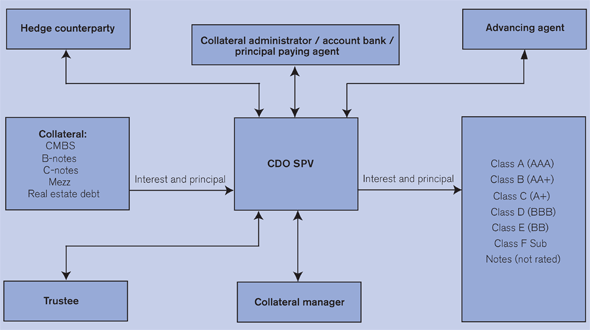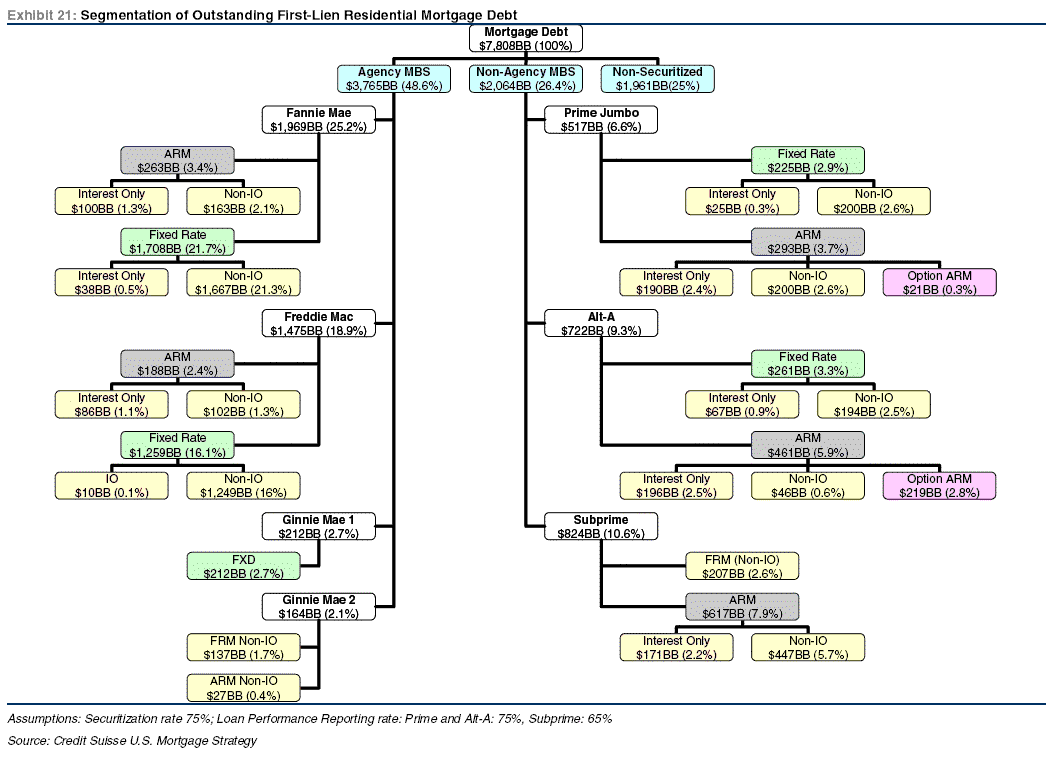The current scenario in debt and equity markets across the globe brings together many principles of networks and graph theory. I will briefly outline the modern structured finance industry to provide not only a window into what has happened, but also to examine critical gatekeepers – the bond insurers – whose potential insolvencies will shock the financial markets in the next round of defaults.
This article from The Economist explains the current issues in the bond insurance industry; and I will elaborate on the gatekeeper role which has concentrated financial risk and led MBIA, Inc.’s CEO to remark that “we were not designed or structured to be the most important company in the entire financial system.”
http://www.economist.com/finance/displaystory.cfm?story_id=10733072
Initially, bond insurers like MBIA focused on the staid business of insuring payments from municipal bonds. But over the past decade, they began deriving the bulk of their revenues from – and writing over half of their policies on – structured finance.
And thus the story begins with the lending industry, which has evolved from the old days of going down to the local savings bank to take out a loan for, say, a new home. The industry now involves an intricate network of agents, which can be viewed as nodes. This network is the basis of risk-transfer that is at the heart of structured finance. Furthermore, the edges between these nodes are very difficult to identify and discern – hence the recent bloodshed on Wall Street, which stems directly from these credit markets.
Unlike the old-fashioned home loan between you and the local thrift, these new agents – lenders along the lines of 1-800-MORTGAGE and FastMortgage.com – do not end up keeping the loans as assets. Instead, they undergo an arcane process of being pooled together with a vast number of other loans, by a second agent, into what is called an asset-backed security. And it does not stop there. They are then passed on once again to a third agent, who uses pools of asset-backed securities to create a new security, a collateralized debt obligation (“CDO”), whose interest payments are contingent upon the performance of the giant pools of underlying loans. In fact, there can even be an additional agent in this line, who constructs CDO-squareds – CDOs to the second power! – or in other words, CDOs of CDOs.
We then reach the fifth agent, the asset manager, who may make a small investment – yet keeps taking fees in return for managing these complex securities for investors. There is also a vast array of accountants, lawyers, middlemen and other financiers, all taking profits every step of the way.
Maybe some clearer insight can be gained from author Tom Wolfe, in a comment he made last year from the floor of the New York Stock Exchange:
“Joseph Schumpeter, the economist, once said that stocks and bonds are evaporated property, meaning you’re pretty soon going to lose sight of the underlying assets. You’re dealing in pieces of paper. Now, these people are selling shares in evaporated evaporation to millions of people. And this is now evaporation cubed. And nobody knows what they’re investing in. It’s E to the third power equals … insanity?”
Here is a graph of a CDO to help visualize the process, components, edges and nodes:
And here is a graph of the cornucopia of mortgage debt, a different dimension of nodes which are being funneled into the CDO:
In this network, risk flows through the graph in the order that I have described, from agent to agent, node to node. There are dozens of large investment banks that form clusters of nodes – with hundreds of minor agent-nodes scattered alongside and around them, each with varying directional and multi-directional edges. Also, most of the big banks have functioned as several of the different agents at the same time. Suffice it to say, if this were such a simple graph to visualize and understand, bankers would have happily avoided their firms’ hundreds of billions in losses and, in many cases, their own pink slips.
But wait! There is an astonishing moral hazard here: every agent is paid upfront – including the agencies who rate the quality of all these securities – except for the ultimate holders of financial risk. Yet at the same time, the underlying loans have minimal visibility to the ultimate holders of risk, who must rely solely on the ratings given to them.
And thus the natural question arises: Who is the “ultimate holder” of risk anyways? Who bears the losses if, say, I decide to stop paying interest on my home loan?
We now return to the bond insurers: the linchpin-like gatekeepers who bear a staggering amount of risk and liability because they must pay claims on every piece of defaulted and evaporated evaporation that they’ve insured, across the entire spectrum of structured finance. MBIA is an example of such a company, and in a rather strange line of business: insuring over $50 billion of subprime CDOs and similar credits using nearly 150% leverage. This is … ummmm … a curious arrangement to say the least.
Sadly, it doesn’t end there: MBIA’s perfect credit rating, given to it by the same agencies that rated the CDOs, is critically important for protecting the value of nearly half-a-trillion dollars of other obligations that it has insured. But if MBIA is swept by a tidal wave of losses from CDOs, these other guarantees will be rendered worthless, leaving their counterparties holding the bag.
As The Economist writes, the extreme concentration of $2.4 trillion worth of securities that are collectively guaranteed by MBIA and its fellow bond insurers presents a massive risk to the financial system, which is an unimaginably more complex and intricate graph.




* You can follow any responses to this entry through the RSS 2.0 feed.